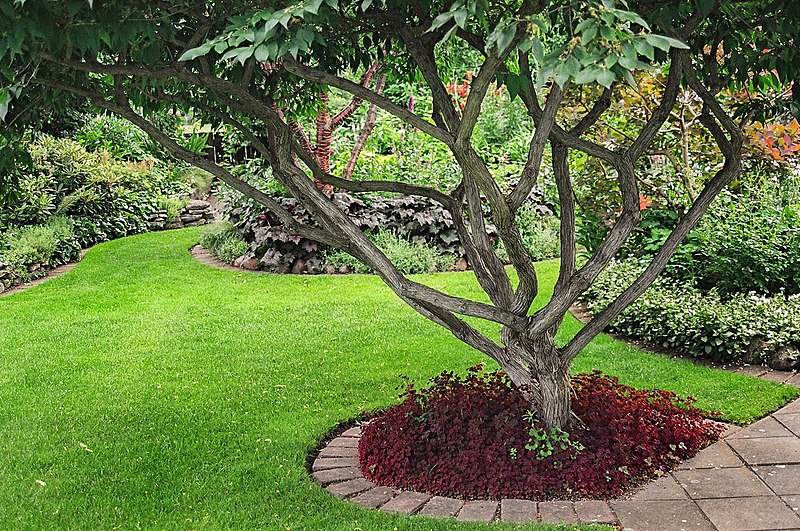
When purchasing a property, a lot of people tend to focus on the interior of the home, and they spend the majority of their time ensuring that the inside of the property is renovated and decorated to their satisfaction.
The exterior or garden is often overlooked. However, the exterior does matter; it affects the overall aesthetics of the property as well as directly impacting your enjoyment of the space.
This is why we have put together the following introductory guide to landscaping. Let’s take a look.
The Importance of Cohesion
The first thing to think about is cohesion. Do you want your home and garden designs to work harmoniously with each other?
Arguably, your design preferences are likely to remain somewhat consistent regardless of whether you are designing the inside or the outside of your home.
The biggest benefit to working towards harmony is simply that the designs will be harmonious and more cohesive.
Depending on your preferred décor style, this might be easier said than done. For example, if you live in a cottage, then a cottagey garden is pretty easy to achieve.
If you prefer minimalism, then it might be trickier to incorporate this into your landscaping efforts; the same can be said for those that enjoy industrial-style décor.
While not impossible, it would definitely be trickier. In all likelihood, because you are designing to your tastes, you are probably going to achieve harmony regardless.
Landscaping Features
There are a number of common landscaping features that you can choose to incorporate into your home design.
Now, you obviously do not need to incorporate all of the features mentioned; in fact, in doing so, you might overwhelm the space.
It is worth thinking about the size of your garden, your preferences, how much time you have to dedicate to maintaining your garden, and finally, what features your garden already possesses; after all, it does make sense to work with what you have.
Think about the lawn, borders, flowerbeds, plants and trees, pathways, fences, water features and any other structures such as a patio or decking.
Before You Get Started
There are several things that you will need to consider before you get started. How long do you plan to live in the property for?
If you think you are likely to move within a few years, then it might not make sense to spend a lot of time, money and effort landscaping the garden perfectly to your tastes.
Instead, you might want to consider what will help to increase the curb appeal of your home.
If you plan to make this property your family home, then your landscaping efforts will be worth it.
Next, you should think about your budget; luckily, there are landscaping designs to suit all budgets, especially if you choose to use DIY methods and source your own materials.
That being said, it does depend entirely on you. If you don’t have the time or expertise, then it might be worth hiring a local landscape gardener to help; MyBuilder allows you to post the details of the job that you need doing, and the relevant tradespeople can then get in touch with you.
DIY Landscaping Mistakes to Avoid
If you do choose to go down the DIY route, then there are several mistakes and pitfalls that amateurs tend to fall into.
Being aware of them can help you to save some time and money. A lot of homeowners tend to begin their landscaping efforts by clearing out their gardens, preferring to work with a blank slate.
While there is not necessarily anything wrong with this, depending on the features within your garden, it could prove to be a mistake.
For example, removing trees is often more difficult and intricate than you would think.
The same can be said for removing or rebuilding a patio or decking. Sometimes it is easier to work with the garden’s existing features.
Another common mistake is often seen in plant choice; if you are going to incorporate plants into your landscaping design, then you need to consider their needs.
How much daylight do they need? Is your topsoil suited to their survival? Can you keep up with their maintenance
These are all questions that you should be asking yourself before you purchase the plants.
Finding Inspiration
There are a lot of places to find interior design inspiration online; in fact, social media is often full of ‘home inspo’ posts.
However, it can be a little trickier to find garden inspiration. If you know anyone with a nice garden, then this can be a great place to get some landscaping inspiration, and you also benefit from knowing them and therefore, you can ask them about how they have achieved it, what they have used and how they keep up with it.
Additionally, you could also consider exploring hundreds of landscape design ideas using AI landscape design, where you can just start with a photo of your yard and enhance it to generate novel landscaping ideas tailored to your yard.
There is also a tonne of gardening shows on the telly; of course, they tend to be in the early afternoon when people are working, but you can always record them or find them on demand.
Magazines and the internet are also a great resource, especially if you know what they are looking for. For example, if you are looking for new garden furniture, you can look at stores online such as Madbury Road to find inspiration.
Using keywords is important here; think about what you want to incorporate into your garden design and search for it; this might mean looking up water features, evergreen plants, low-maintenance gardens or whatever the case may be.
Vertical Gardening
A lot of newbies to landscaping tend to focus their efforts on the ground.
Obviously, this makes sense for the most part. Landscaping is a lot of groundwork.
However, not everyone will have a particularly big garden. This might mean that you can’t do as much as you would like with your garden. Otherwise, you risk limiting the usable space that you do have.
This is where vertical gardening comes in. You can take advantage of trellis’, palettes or other methods in order to plant upwards.
Obviously, you will need to think about which plants are likely to thrive in this environment, but it does open your options up more.
Winter-Proofing
Winter-proofing your garden as much as possible can help to increase your overall enjoyment of the space as well as giving it more curb appeal when it comes to selling the property.
There are also the trends to consider. Evergreens or hardier plants can survive the winter, but you can also create visual interest through other mediums like garden structures or features.
You can even choose to incorporate ornamental grasses or decorations like fairy lights or tiki torches; you could even build a firepit to provide a bit of warmth.
There are a number of other tips to bear in mind too. If you plant the bulbs in the autumn months, provided they can survive, they will bloom earlier in the new year.
Remember to deadhead perennials in order to maximise their second bloom.
Vary your planting plans to try and put different types of plants next to each other to maximise payoff; it also helps to create more visual interest too.
The Takeaway
Landscaping a garden well often feels like a challenge, and it can be.
However, with the right approach, it is likely to be easier than you would think it is.
If you have the money and the inclination, then hiring a landscape gardener is arguably easier.
However, there are a number of mental and physical benefits to gardening too. It can be an excellent hobby to take up, so bear that in mind.
(Pic by W.carter under creative commons licence)



















Recent Comments